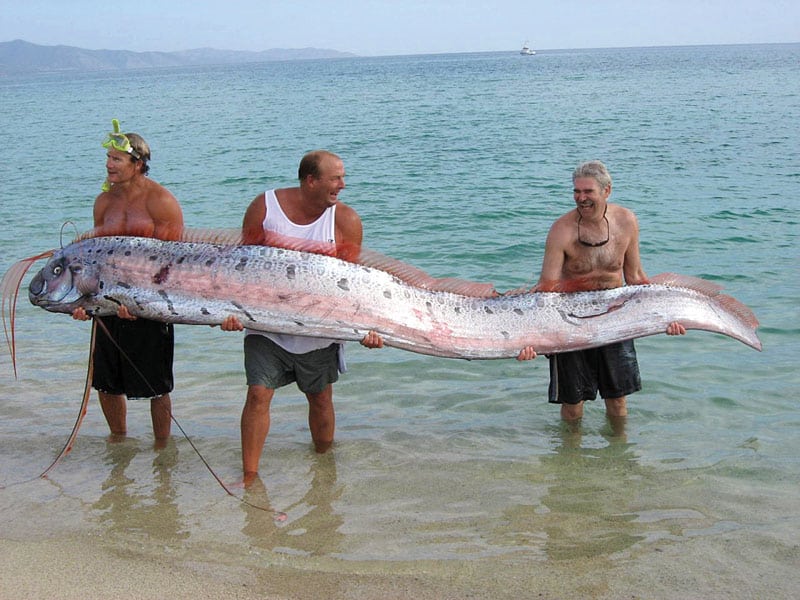
Giant Oarfish Facts
- Most notably, the incredible Giant Oarfish ranks as the longest bony fish known to man. Scientists recognize a total of three species within two genera, yet this remains the largest of them all.
- Many researchers also believe it to be the origin of many of the supposed sea monster sightings. That occurs primarily due to the combination of its distinctive shape and way of moving .
- However, man has known of the species for some time. That’s Peter Ascanius first describe it in the year 1772. Further, the scientific name itself reflects the location at which he found the first specimen.
- Finally, this startling creature is not fished commercially. Though rarely seen, experts believe its numbers to be stable. Therefore, the IUCN currently lists it as Least Concern.
Related Articles
Seahorse
Giant Oarfish Physical Description
Firstly, it must be pointed out that the Giant Oarfish earns its common name. That’s due to the fact that the longest recorded specimen measured 36 ft (11 m) in length. But, reports of much larger individuals exist.
Yet, a length of about 9.8 ft (3 m) remains the average size of this particular fish. However, the maximum recorded weight for this remarkable species of fish currently equals roughly 600 lb (270 kg).
Furthermore, its body shape remains highly elongated, even ribbon-like. It also develops extremely narrow laterally. In addition, it presents a dorsal fin that extends from its forehead to the tip of its tail.
But the head itself remains comparatively small. It also displays an ornate red crest-like structure. Finally, its coloring consists primarily of silver, with numerous blotches of dark gray, brown, and bluish shades.
- Kingdom: Animalia
- Phylum: Chordata
- Class: Actinopterygii
- Order: Lampriformes
- Family: Regalecidae
- Genus: Regalecus
- Species: R. glesne
Giant Oarfish Distribution, Habitat, and Ecology
It remains quite important to note that the fabulous Giant Oarfish appears to have a worldwide distribution. However, the fantastic creature seems to be most common in the middle latitudes and the tropics.
In addition, it apparently inhabits a rather wide range of depths. Experts believe it to live and feed from the surface to moderately great depths. This range extends to as much as 3,300 ft (1,00 m) beneath the surface.
Quite unfortunately, though understandably, we still know very little about the behavior and life of this fish. Yet, some observations and deductions have been made concerning this aspect of its existence.
Firstly, its diet appears to consists mostly of a combination of small fish, squid, crustaceans, and krill. Further observations indicate that the large fish lives a mostly solitary life as an adult.
Species Sharing Its Range
Check out our other articles on 6 Extremely Localized Invertebrates, Perdita Minima, El Tatio, Fairy Lantern, Florida Panther, Giant Golden Orb Weaver, Rose’s Ghost Frog, Mangrove Monitor
